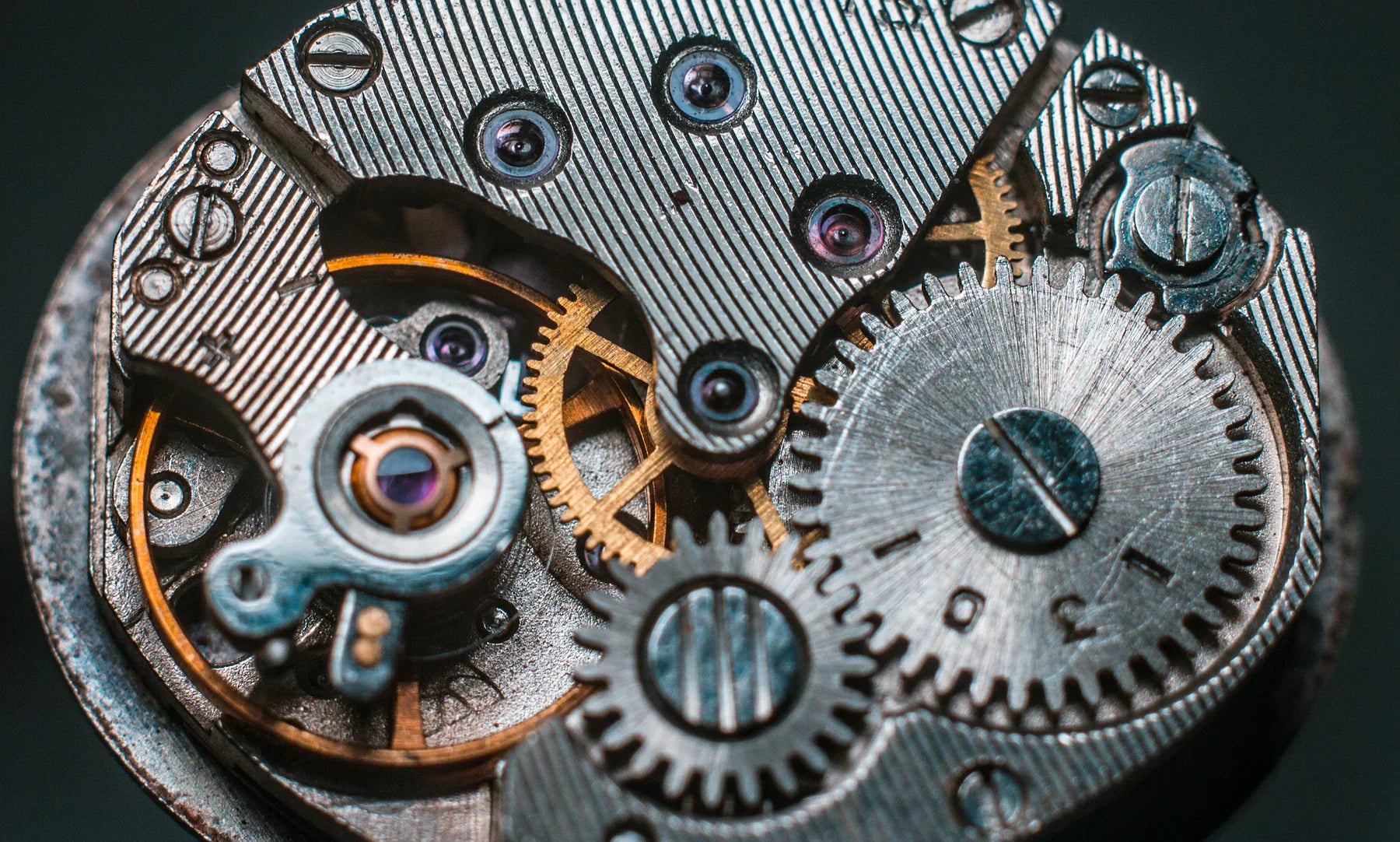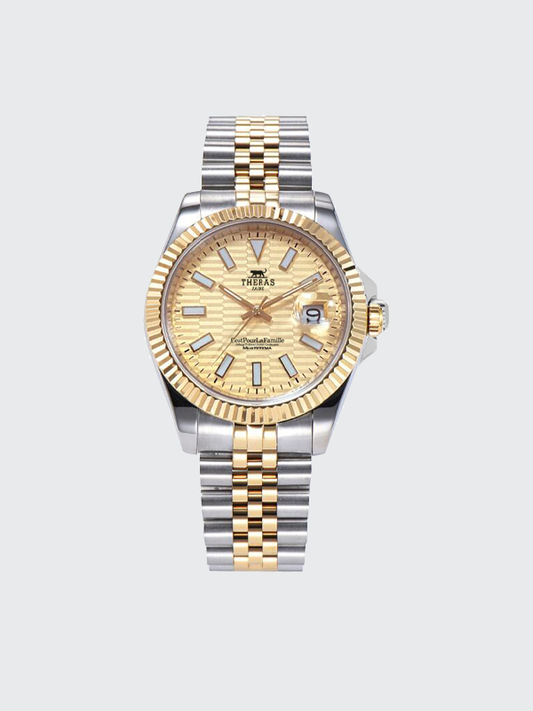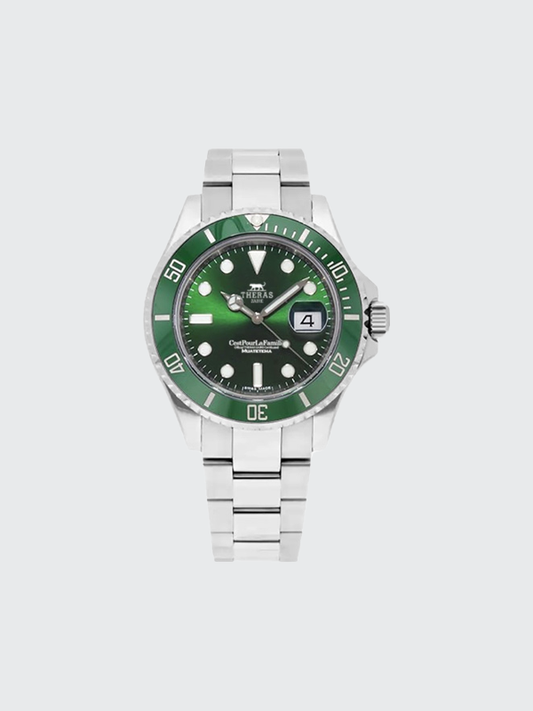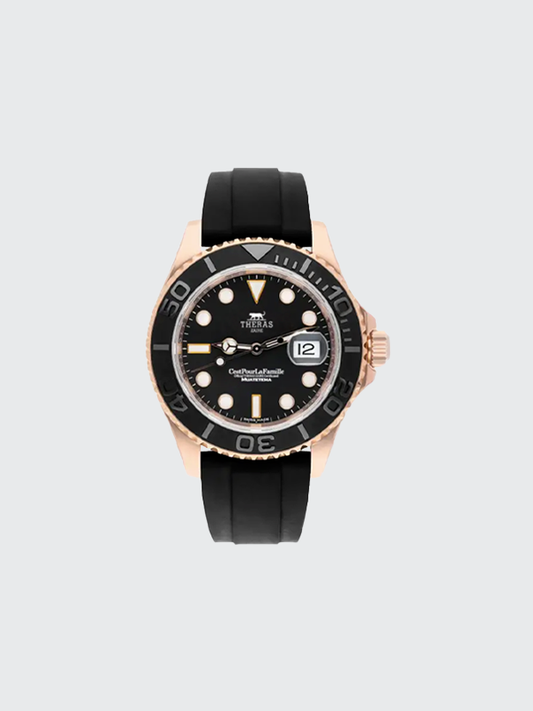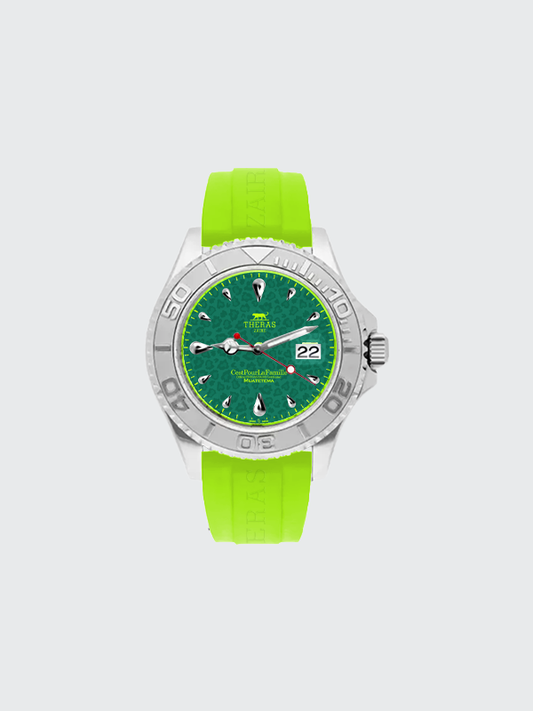𝐓𝐡𝐞 𝐇𝐢𝐬𝐭𝐨𝐫𝐲 𝐨𝐟 𝐖𝐚𝐭𝐜𝐡𝐞𝐬: From Ancient Timekeeping to the Future of Smartwatches
Introduction: The Fascinating World of Watches
Watches have accompanied humanity for centuries, far beyond their basic function of telling time. They symbolize precision, ingenuity, status, and style. From the early sundials of ancient Egypt to today’s sophisticated smartwatches, watches reflect technology, culture, and craftsmanship through the ages.
It is not an exaggeration to say that watches have shaped our perception of time. For centuries, keeping track of hours was not only a practical matter but also a symbol of order, progress, and influence. Today, when we glance at a watch, we are witnessing centuries of innovation, design, and engineering excellence. This article explores the evolution of watches, their cultural impact, and how cutting-edge technology is redefining the art of timekeeping.
 Early Timekeeping Devices
Early Timekeeping Devices
Before the invention of mechanical watches, ancient civilizations developed ingenious methods to track time, laying the foundation for modern horology. These early timekeeping devices were not only practical tools but also essential for religion, agriculture, and navigation, reflecting the ingenuity and observational skills of their creators.
Sundials: Harnessing the Sun
Sundials were among the earliest timekeeping instruments, pioneered by the ancient Egyptians. By observing the position and shadow of the sun, sundials divided the day into segments, helping people plan daily activities. Beyond everyday use, sundials played a critical role in regulating religious rituals, agricultural cycles, and civic events. Their precision depended on geography and solar patterns, demonstrating early human understanding of astronomy and mathematics.
Water Clocks (Clepsydras): Flowing Time
Water clocks, or clepsydras, were widely used in Greece, Egypt, and Rome. These devices measured time through the steady flow of water from one container to another, allowing for a continuous sense of hours and minutes. Water clocks were crucial for ceremonial events, court proceedings, and city administration, enabling a more standardized measurement of time than natural indicators like the sun.
Hourglasses: Tracking Time with Sand
Hourglasses, introduced later in history, became popular during the Middle Ages. By measuring the passage of sand from one chamber to another, hourglasses offered a portable and reliable method of timekeeping. They were widely used domestically, in navigation at sea, and for early industrial or artisanal tasks, providing a visual and intuitive representation of time.
The Foundation for Mechanical Watchmaking
Although simple by today’s standards, these early devices were crucial in the evolution of timekeeping. They established the principles of systematic measurement, intervals, and accuracy, paving the way for the development of mechanical clocks and eventually personal watches. Without the innovation of sundials, water clocks, and hourglasses, the precision and artistry of modern watchmaking would not have been possible.
 The Birth of Mechanical Watches
The Birth of Mechanical Watches
The 13th century in Europe marked a pivotal moment in the history of timekeeping with the invention of the first mechanical clocks. These early devices, often installed in church towers, monasteries, and public squares, relied on intricate gears, escapements, and weights to regulate time, representing a remarkable leap in human engineering and scientific understanding.
Large-Scale Precision for Public Life
Mechanical clocks of the era were expensive, complex, and accessible only to the wealthy or institutions. Despite their limited availability, they held immense social and cultural significance. These clocks helped structure daily life, religious ceremonies, and market schedules, allowing communities to coordinate activities with unprecedented accuracy. The presence of a mechanical clock became a symbol of technological progress, civic pride, and social organization.
Miniaturization and the Path to Personal Watches
The success of large mechanical clocks spurred innovation toward miniaturization, eventually enabling the creation of portable timepieces. Early personal watches were still luxury items, often worn as pendants or small pocket devices, but they represented a revolution in accessibility and convenience. Miniaturization not only made timekeeping personal but also laid the groundwork for wristwatches and later innovations, blending craftsmanship, artistry, and functionality.
The Legacy of Early Mechanical Watches
The birth of mechanical watches set the stage for centuries of horological innovation, influencing both technical design and social perception of time. These early devices were more than instruments; they were symbols of precision, innovation, and societal advancement. Today’s mechanical watches honor this heritage, combining complex movements, aesthetic beauty, and historical significance in every carefully crafted timepiece.
 The Rise of the Pocket Watch
The Rise of the Pocket Watch
By the 16th century, portable watches became a reality, giving birth to the pocket watch—luxurious, ornamental, and initially reserved for the elite.
- Originally, pocket watches were more status symbols than practical tools.
- Merchants and travelers found them useful, but fragility limited daily use.
- From the 17th to 18th centuries, precision improved with innovations like the lever escapement, balance wheel, and main spring, making them reliable tools for business and travel.
By the late 19th century, pocket watches combined functionality and style, becoming indispensable fashion accessories.
The Wristwatch Revolution
While wristwatches were first created in the early 19th century, they did not become a mainstream accessory until the 20th century. Originally, wristwatches were luxury items or ornamental pieces, often worn by women as a display of elegance and refinement.
1810: Abraham-Louis Breguet and the First Wristwatch
In 1810, the renowned Swiss watchmaker Abraham-Louis Breguet crafted one of the first known wristwatches for the Queen of Naples. This creation was both a marvel of precision engineering and a statement of luxury. Its design emphasized delicate aesthetics and sophistication, reflecting the tastes of elite society rather than practical daily use.
Wristwatches Gain Practicality During World War I
The widespread adoption of wristwatches among men was largely driven by World War I. Soldiers needed a practical way to coordinate operations and synchronize attacks without constantly reaching for a pocket watch. Wristwatches offered hands-free convenience, precision, and durability, transforming them from ornamental jewelry into essential tools for modern life.
From Utility to Symbol of Personal Expression
The wristwatch quickly became a symbol of both practicality and style. Beyond telling time, it communicated status, personality, and taste, merging technical craftsmanship with fashion and identity. Over the decades, wristwatches evolved into fashion statements, luxury items, and functional gadgets, bridging heritage and innovation in ways that continue to define the modern watch market.
 Key Milestones in Watchmaking
Key Milestones in Watchmaking
The evolution of watches has been marked by major technological and design breakthroughs that not only enhanced functionality but also transformed the cultural and social significance of timepieces. From the earliest mechanical watches to modern smartwatches, these milestones highlight the ingenuity, craftsmanship, and innovation that define horology.
1770s: The First Self-Winding Watch
The first self-winding or automatic watch was developed in the 1770s, allowing a watch to wind itself using the natural motion of the wearer’s wrist. This innovation eliminated the need for daily manual winding and represented a significant leap in convenience and engineering. Automatic watches remain highly valued today for their mechanical sophistication and historical importance.
1926: The First Waterproof Watch – Rolex Oyster
In 1926, Rolex introduced the Oyster, the world’s first truly waterproof watch. With its sealed case and screw-down crown, the Oyster became a symbol of durability, innovation, and luxury. This milestone allowed watches to accompany wearers in all environments, including underwater, paving the way for modern diving and sports watches.
1957: The First Electronic Watch
The 1950s saw the emergence of electronic watches, which replaced traditional mechanical movements with electrical components. This development marked the beginning of the transition from purely mechanical timekeeping to modern electronic technology, enhancing accuracy while expanding the possibilities for design and functionality.
1969: Quartz Watches Revolutionize Precision
The quartz watch, introduced in 1969, revolutionized the watch industry by offering unprecedented precision and affordability. Using a quartz crystal oscillator, these watches kept time far more accurately than mechanical counterparts, making reliable timekeeping accessible to a wider audience. This breakthrough also spurred the “Quartz Crisis” in Switzerland, challenging traditional watchmakers to innovate or adapt.
1972: The First Digital Watch with LCD Display
In 1972, the first digital watch with an LCD display was launched, introducing a new era of timekeeping innovation. Digital watches allowed for instant reading, multifunctionality, and futuristic designs, appealing to tech enthusiasts and a younger generation. This milestone foreshadowed the smartwatch revolution, where functionality and connectivity became central to the concept of a watch.
The Impact of These Innovations
Each of these milestones not only improved timekeeping accuracy and convenience but also reshaped how society views watches. Timepieces evolved from purely functional tools into status symbols, fashion statements, and expressions of technological sophistication. From luxury mechanical watches to digital and smartwatches, each breakthrough reflects the interplay of culture, craftsmanship, and innovation that continues to define the modern watch industry.
 Technological Evolution and Modern Materials
Technological Evolution and Modern Materials
The world of watchmaking has undergone a remarkable technological evolution, transforming timepieces from purely mechanical instruments into high-tech devices that combine craftsmanship, design, and functionality. Modern watches embody a balance between heritage, innovation, and personal expression, making them more versatile than ever before.
Mechanical vs. Quartz Watches: Tradition Meets Precision
One of the most significant advancements in horology is the development of quartz technology in the 20th century.
- Mechanical Watches: These watches maintain centuries-old traditions, showcasing meticulous craftsmanship, intricate gears, and delicate escapements. Mechanical watches are highly valued for their artistry, heritage, and the human skill involved in their creation. Brands like Rolex, Patek Philippe, and Audemars Piguet continue to celebrate this legacy, making mechanical watches prized collectibles.
- Quartz Watches: Introduced in the 1960s and 1970s, quartz watches revolutionized timekeeping with unmatched precision, affordability, and accessibility. Using a quartz crystal oscillator, these watches keep time with minimal maintenance, making them ideal for everyday wear while still offering sleek, modern designs.
Advanced Materials for Durability and Style
Modern watchmaking increasingly incorporates high-tech materials to enhance durability, aesthetics, and comfort:
- Titanium: Lightweight, hypoallergenic, and highly resistant to corrosion.
- Ceramic: Scratch-resistant, smooth, and visually striking, often used for bezels and cases.
- Carbon Fiber: Strong, lightweight, and ideal for sporty or high-performance watches.
- Sapphire Crystal: Exceptionally hard and scratch-resistant, protecting watch faces from daily wear.
These materials allow designers to push creative boundaries, producing watches that are both robust and luxurious, suitable for extreme conditions or elegant occasions.
Smartwatches: Redefining Timekeeping
The advent of smartwatches has redefined what a watch can do. Equipped with fitness tracking, GPS navigation, mobile payment systems, and seamless smartphone connectivity, smartwatches bridge the gap between traditional timekeeping and digital convenience. They offer users a personal assistant on the wrist, monitoring health, scheduling tasks, and integrating effortlessly into modern lifestyles.
Modern Watches: Heritage Meets Innovation
Today’s watches are a perfect fusion of tradition, aesthetics, and technology. Whether it’s a mechanical watch preserving centuries of craftsmanship, a quartz watch offering precision and reliability, or a smartwatch redefining functionality, modern timepieces honor the past while embracing the future. They are no longer just tools for measuring time—they are statements of design, innovation, and personal identity.
Design, Aesthetics, and Fashion
Watches have always occupied a unique space at the intersection of function, fashion, and personal expression. They are not only precise timekeeping tools but also jewelry and status symbols, reflecting culture, lifestyle, and individual taste. The design and aesthetic choices in watches convey subtle messages about personality, profession, and values.
Dress Watches: Minimalist Elegance
Dress watches are crafted for formal occasions and professional settings. Characterized by slim profiles, simple dials, and understated materials, these watches prioritize elegance and sophistication. Typically paired with business attire or evening wear, dress watches communicate refined taste and attention to detail. Brands like Patek Philippe, Jaeger-LeCoultre, and Vacheron Constantin are celebrated for producing timeless dress watches that blend classic design with exceptional craftsmanship.
Sports Watches: Durability Meets Functionality
Sports watches are designed for performance, resilience, and practicality. This category includes diving watches, chronographs, pilot watches, and racing-inspired models, built to withstand water, pressure, shocks, and extreme conditions. Sports watches often feature robust materials, luminous hands, and additional functionalities such as tachymeters or depth meters. They are ideal for active lifestyles and adventurous personalities, combining utility with bold aesthetics.
Hybrid and Customizable Watches: The Best of Both Worlds
Modern watchmaking increasingly focuses on hybrid and customizable designs, offering a classic appearance with integrated smart features. These watches merge traditional craftsmanship with modern technology, allowing wearers to enjoy elegance, connectivity, and personalization simultaneously. Users can track fitness, receive notifications, and even customize watch faces, all while maintaining a timeless, stylish look.
Watches as Personal Identity
In today’s world, a watch is far more than a tool to measure time—it is an extension of identity. From minimalist dress watches to high-tech hybrids, each timepiece communicates values, taste, and lifestyle. Wearing a carefully chosen watch signals sophistication, attention to detail, and personal priorities, making it a statement piece that merges fashion, function, and individuality.
 Sustainability and Ethics in Watchmaking
Sustainability and Ethics in Watchmaking
In today’s luxury and tech watch market, consumers no longer prioritize style and precision alone. Increasingly, buyers demand responsibility, sustainability, and ethical practices from watchmakers. Modern consumers want their timepieces to reflect not just personal taste, but also values that matter globally.
Sustainable Materials in Watchmaking
Leading brands are now incorporating recycled metals, responsibly sourced gold, and conflict-free diamonds into their designs. Using sustainable materials not only reduces environmental impact but also appeals to consumers who care about ethical production. Watches crafted from recycled stainless steel or eco-friendly straps combine luxury and conscience, proving that elegance does not have to come at the planet’s expense.
Minimizing Packaging and Extending Product Lifespan
Sustainability extends beyond materials. Watchmakers are increasingly reducing packaging, opting for recyclable or minimalistic designs. Additionally, brands are focusing on durable construction and long-lasting movements, encouraging customers to keep and maintain watches rather than replace them frequently. This approach promotes longevity and reduces environmental footprint, aligning with the growing culture of mindful consumption.
Ethical Sourcing and Conflict-Free Components
Ethical sourcing is critical in luxury watchmaking. Responsible brands ensure that metals, gemstones, and diamonds are acquired through transparent, conflict-free supply chains. By prioritizing ethics over profit, watchmakers reinforce trust, prestige, and authenticity, which are essential for high-end buyers.
Smartwatch Recycling Programs
Even in the tech-driven world of smartwatches, sustainability is gaining importance. Leading smartwatch companies now implement recycling and take-back programs to combat electronic waste. From reusing components to safely disposing of batteries, these initiatives reduce environmental impact while reinforcing the brand’s commitment to responsible innovation.
Sustainability Defines Modern Watch Value
Today, sustainability is no longer optional—it has become a core criterion for assessing the value of a timepiece. Buyers expect watches to combine timeless design, technical precision, and responsible production. In essence, a modern watch is a reflection of taste, innovation, and ethical consciousness, making it more than just an accessory—it is a statement of values.
 The Future of Watches
The Future of Watches
The watch industry is on the brink of a technological revolution, with emerging innovations set to redefine the role of timepieces. Modern watches are evolving beyond simple timekeeping into smart, interactive, and highly personalized devices, blending art, science, and technology.
AI and Machine Learning: Personalized Timekeeping
Artificial intelligence and machine learning are being integrated into next-generation watches, allowing devices to learn user habits, optimize functionality, and offer tailored recommendations. From adjusting notifications based on daily routines to suggesting fitness or wellness routines, AI-powered watches become intelligent personal assistants on the wrist.
AR and IoT Connectivity: Interacting with the World
Augmented reality (AR) and Internet of Things (IoT) connectivity are transforming watches into interactive control hubs. Future watches may project information directly onto surfaces, control smart home devices, or interface seamlessly with cars and appliances, turning a timepiece into a centralized command center for daily life.
 Alternative Energy: Reducing Dependence on Batteries
Alternative Energy: Reducing Dependence on Batteries
Sustainable innovation is also reshaping watch energy sources. Advanced watches are beginning to harness body heat, kinetic motion, or solar energy, reducing reliance on conventional batteries. This not only enhances convenience but also aligns with the growing demand for eco-friendly and sustainable technology.
Advanced Health Monitoring: Beyond Fitness Tracking
Health monitoring is becoming increasingly sophisticated. Emerging watches will be capable of tracking multiple vital signs, detecting early illness, and potentially even administering medication. By combining sensors, AI, and medical data, watches of the future will act as proactive health companions, helping users maintain wellness and prevent illness.
The Future of Watches: Hybrids of Art, Science, and Technology
The next generation of watches will be multifunctional, highly personal, and technologically advanced. They will seamlessly integrate mechanical artistry, digital innovation, and sustainable design, serving as both luxury items and essential lifestyle tools. Future watches promise to be extensions of the wearer’s identity, combining aesthetics, functionality, and intelligence like never before.
Frequently Asked Questions (FAQs) About Watches
When Was the First Mechanical Watch Invented?
The first mechanical watches were invented in 13th-century Europe, representing a major milestone in the history of horology. These early timepieces were intricate devices powered by gears, springs, and escapements, enabling people to measure time far more accurately than traditional sundials or water clocks.
Originally, these watches were large and often installed in towers or worn as pendants, serving not only as functional tools but also as symbols of wealth, innovation, and craftsmanship. Mechanical watches of the 13th century laid the foundation for the evolution of modern watches, influencing both design and technology for centuries. Even today, collectors and enthusiasts admire these early creations for their historical significance and timeless elegance.
Who Created the First Wristwatch?
The first wristwatch was crafted by the legendary Swiss watchmaker Abraham-Louis Breguet in 1810, commissioned for the Queen of Naples. At that time, pocket watches dominated personal timekeeping, but Breguet’s innovation introduced the concept of wearing a watch on the wrist, combining practicality with elegance.
Wristwatches gradually gained popularity, particularly during the early 20th century, when they became essential tools for military officers and adventurers. Over time, they evolved into everyday accessories, balancing precision engineering, luxury design, and personal style. Today, wristwatches continue to symbolize status, sophistication, and professionalism.
What Is a Smartwatch?
A smartwatch is the modern evolution of the traditional watch, merging classic timekeeping with advanced digital technology. Unlike mechanical or quartz watches, smartwatches connect to smartphones and provide a wide range of features:
- Health and fitness tracking: Monitor heart rate, sleep cycles, steps, and overall activity.
- Communication tools: Receive calls, text messages, and emails directly on your wrist.
- Multimedia capabilities: Control music, access GPS navigation, and run apps seamlessly.
Smartwatches are the perfect fusion of technology, convenience, and style, making them essential for professionals, athletes, and tech enthusiasts alike. They redefine what it means to wear a watch in the 21st century, blending innovation, functionality, and personal expression into one device.
Why Are Watches Symbols of Status?
Watches have long been regarded as symbols of luxury, prestige, and sophistication. Their status derives from several key factors:
- Historical Significance: Watches carry centuries of horological innovation, from the earliest mechanical timepieces to modern smartwatches.
- Craftsmanship: Luxury watches are handcrafted with meticulous attention to detail, often incorporating precious metals, gemstones, and complex mechanical movements.
- Technological Innovation: High-end watches showcase cutting-edge engineering, combining precision, durability, and aesthetic excellence.
- Social Symbolism: Owning a fine watch signals success, refinement, and good taste, making it a key accessory in professional, social, and cultural contexts.
In essence, a watch is more than a tool—it is a statement of identity, values, and personal style, embodying both heritage and modernity.
From iconic brands like Rolex, Patek Philippe, and Breguet to modern Apple and Samsung smartwatches, watches continue to represent a unique blend of history, design, and personal identity.

